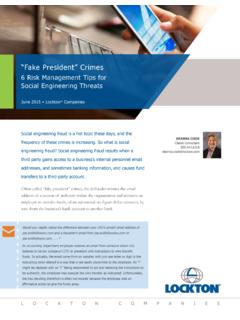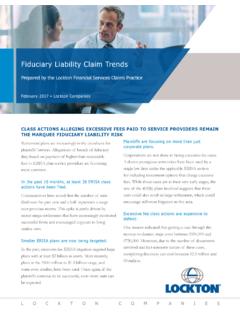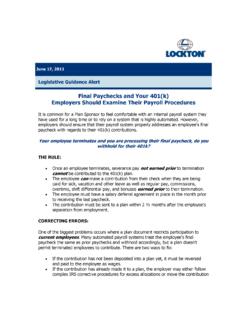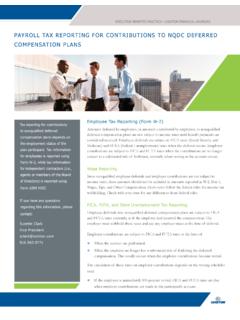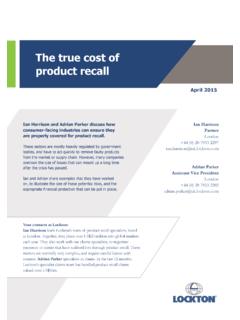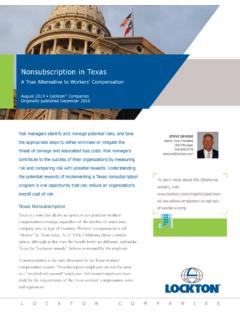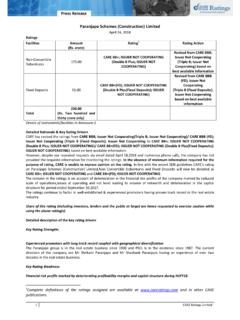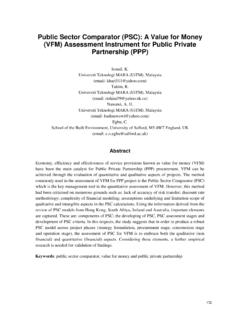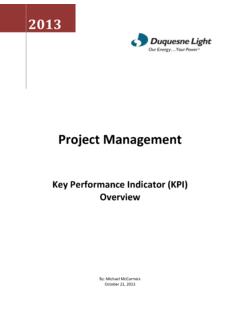Transcription of Managing and Mitigating Subcontractor efault Risk
1 By Mark Morris, Justin VanOpdorp, and Thomas MillerLockton Companies | August 2011 Managing and Mitigating Subcontractor Default RiskBuilding a Strong Foundation to Survive Tumultuous Times1 Mark MorrisCPA, CPCU, ARMS enior Vice President, Risk FinanceTelephone: VanOpdorpFCAS, MAAA, ACASS enior Vice PresidentManager Quantitative AnalysisTelephone: MillerSenior Vice President, Unit ManagerTelephone: following is the second installment in a three-part series on construction risk finance. Mark Morris, SVP, Lockton Construction Risk Finance, is joined by Justin VanOpdorp, SVP, Manager of Lockton s Quantitative Analysis Group, and Tom Miller, SVP, and Unit Manager, to discuss Subcontractor default and the impact on general contractors and the business of one wins when a Subcontractor fails to perform according to the terms of its contract.
2 Adverse financial repercussions impact all parties involved, including the project owner, the general contractor, the Subcontractor and, if there is one involved, the bonding company. Managing Subcontractor risk is far different than work that is self-performed, and in today s environment, the stakes involved in Managing Subcontractor risk are higher than ever before. Current economic conditions have resulted in a downturn in the number of construction projects, which puts significant strain on the balance sheets of both general contractors and subcontractors. As a result, both strive to lessen that strain and keep their respective work forces in place by acquiring new work, in a number of cases at less favorable financial terms than in previous years, which can lead to a compromised ability to perform on the part of subcontractors and general contractors.
3 Also, increased litigation and class action suits over construction defects have significantly enhanced the legal liability of general contractors and subcontractors alike. 2As a result of these influences, general contractors are taking on more risk of Subcontractor performance at a time when the risk of technical default is greater than ever. To avoid being caught in an exposed position, it is essential that the general contractor be able to evaluate, quantify and mitigate the risk of Subcontractor default. The available risk financing options should also be evaluated. In the economic uncertainty of today s construction environment, the risks that a general contractor must deal with are of heightened this white paper, we cover the following topics: How Subcontractor risk is managed and insured.
4 Alternatives for financing this risk. Analytical methods for quantifying Subcontractor default risk. ACTIVE MANAGEMENT OF Subcontractor DEFAULT RISK Contractors are responsible for adhering to completion dates and project specifications. They retain not only the risk of Managing their own work but also significant risk for a Subcontractor s failure to perform according to the contractual terms agreed to with the the costs of Subcontractor default are significant, a general contractor will often go to great lengths to avoid terminating a Subcontractor . This can include renegotiating the contract, reducing the scope of the Subcontractor s work, providing supplemental staffing, assisting with payroll and directly procuring equipment or materials.
5 Helping the Subcontractor across the finish line reflects the reality that a terminated Subcontractor ends up costing all parties involved significant sums of money and significant additional active management of Subcontractor default risk begins with Subcontractor prequalification and continues with active monitoring of Subcontractor performance and payments. Prequalification should include financial analysis of the Subcontractor , reference checks with other general contractors, suppliers and second tier subcontractors, the general contractor s own past experience with the Subcontractor and a thorough review of the Subcontractor s safety performance and quality assurance/quality control a general contractor, the monitoring of Subcontractor performance and payment is the responsibility of your home office staff and your field staff.
6 You need to ensure that your staff is appropriately trained to understand the financial impact of paying for work that was either not performed or was performed improperly by a Subcontractor . Either event will negatively impact your projected costs of project completion, particularly so if extensive rework is involved. Additionally, consideration should be given to spot-checking the Subcontractor s payments to suppliers and second-tier subs, as the job progresses, to be certain that those parties have been reimbursed appropriately by your Subcontractor on your project. Lien waivers from all parties should be required as a condition of has developed several tools and services to assist general contractors with the prequalification, selection and payment/lien waiver management of subcontractors.
7 For more information on these services see the sidebar discussing SCORE and APPROACHES TO HANDLE Subcontractor DEFAULT RISKTwo decades ago, surety bonds were almost exclusively used to manage the risk of Subcontractor default, but this has since evolved. In the 1990s, Zurich developed an alternative to surety bonds called Subguard , an insurance solution that reflects in many ways the economic reality of the risk. Recognizing that general contractors often incur costs to avoid having to terminate a Subcontractor who is in technical default, Zurich designed Subguard to allow a general contractor to assume some of the risk of a defaulting Subcontractor and transfer losses above the Subguard program retention to Zurich.
8 The product is priced in a manner to allow it to be competitive with the costs of procuring Subcontractor payment and performance is, in fact, a loss-sensitive insurance program where the general contractor, in exchange for assuming some of the risk, stands to potentially receive a portion of the program costs if it is successful in Managing the risk of Subcontractor default and LOCKTON SCORET hrough the use of proprietary analytics applied consistently to a large population of subcontractors, SCORE ranks and objectively compares contractors on a financial, safety and quality assurance an Internet- and e-mail-based payment notification and electronic lien waiver execution and management system, PayLock enables general contractors to track and manage downstream payments to first- and second-tier subcontractors and loss payments.
9 The concept is similar to a Contractor-Controlled Insurance Program (CCIP) which typically functions on the same basic premise but is geared toward controlling loss costs arising from general liability claims, workers compensation claims or in the risk allows a general contractor to offset costs associated with instances of technical default, but where the general contractor worked with the Subcontractor to avoid having to terminate the Subcontractor . It should be noted that Subguard will also respond should any Mitigating measures fail and the general contractor is forced to terminate the Subcontractor . Subguard allows a general contractor to share in the upside of Managing the risk and yet protects it from the more severe financial consequences of a default.
10 This risk-sharing approach allows general contractors to focus on getting the job completed on time, on budget (subject to their retention under the program) and according to contract terms. The ability to manage situations of technical default, , where work was not performed according to specification, the financial distress of a Subcontractor , etc., creates a more effective claim management tool for the general the Zurich Subguard program, there are several options available. The amount of Subcontractor default risk a general contractor wants to self-insure versus transfer to Zurich is one issue. The amount of insurance limits to purchase is another. There are also various ways the Subguard program can be structured.

